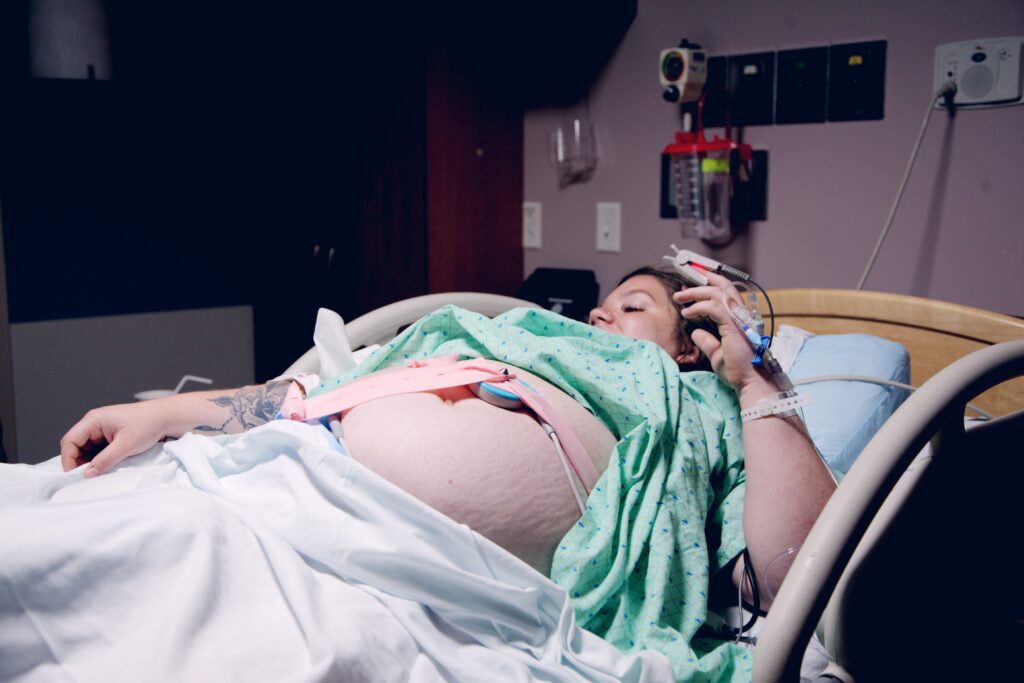Birth Trauma Support with Integritas Wellness and Recovery
Learn what defines birth trauma and how to find help in overcoming your experience.

Defining “Birth Trauma”
Any traumatic event surrounding the birth of a child can be considered birth trauma.
- Preterm labor and birth
- Separation from your baby due to a NICU stay
- An emergency c-section
- Any difficulties the baby or birthing person may have during or immediately following birth
- The tragedy of stillbirth
- Physical, psychological, and emotional distress during or immediately following birth
- Poor treatment by providers during or immediately following the birth of your baby all fall under the category of birth trauma.
Really, the birthing person is the one who determines if the birth was traumatic. No one else gets to make that determination for you. With this kind of broad definition of birth trauma, some data suggests that up to 45% of birthing people report experiencing a traumatic birth (Beck, Watson, & Gable, 2018). Birth trauma greatly increases the incidence of postpartum mental health issues.
Make a Change
Carolyn Solo, LCSW, EMDR therapist and owner of Integritas Wellness and Recovery LLC experienced a traumatic birth with her first child. Although both she and her baby were physically fine after the birth, the experience was so challenging and frightening that she knew she had to radically alter the care she would receive for subsequent pregnancies and births. Carolyn had very traditional OB care during her first pregnancy – at a large practice connected to a hospital.
Her labor escalated quickly and was excruciating. Because she was in a traditional hospital setting, she was required to birth on her back – probably the least efficient way to push – and she never felt the urge to push. She just pushed, in agonizing pain, for three hours.
Carolyn’s baby was born healthy, thank goodness, but the internal physical trauma was significant, affecting her ability to go to the bathroom and to resume physical activity for months. She was an avid runner before birth and after her first daughter’s birth, every time she went for even the shortest run, it would feel like her insides were going to fall out. She was also psychologically impacted by the disempowerment and fear she experienced throughout the pushing ordeal.
When it came time to have her second child, she chose to go to a birth center. She was encouraged to move through labor in whatever position felt comfortable to her. She moved in and out of a whirlpool tub, used a birthing ball, crouched, walked, etc.
This birth was by no means easy – are there any easy births? No – but Carolyn had choice, autonomy, and the support of a great team of providers, and her wonderful spouse who completely supported her choices for a different birth setting.
These experiences informed Carolyn’s desire to help other birthing people recover from their own birth traumas. Her professional identity as a trauma therapist helped her view these experiences through the lens of trauma.
 Overcoming Trauma
Overcoming Trauma
Trauma is embodied – its vestiges remain in the body long after the event has come to an end. What could be a more embodied experience than birth? Intense, potentially overwhelming and often painful body sensations are pivotal elements of the birth experience. For many birthing people, those sensations – whether it’s painful contractions, pushing, c-section surgery, medical interventions during birth, the body sensations of panic, fear, anxiety that can accompany the tumultuous ride of birthing, the physical aftermath of birth – are traumatic.
An embodied approach to trauma treatment like EMDR (which stands for Eye Movement Desensitization and Reprocessing) can clear the remains of those experiences that live on in the body. EMDR can also treat the psychological reminders of a traumatic birth – flashbacks, anxiety about future births, fear of other medical procedures, etc.
Learn more about how EMDR can help you overcome the trauma you experienced during the birth of your child.





